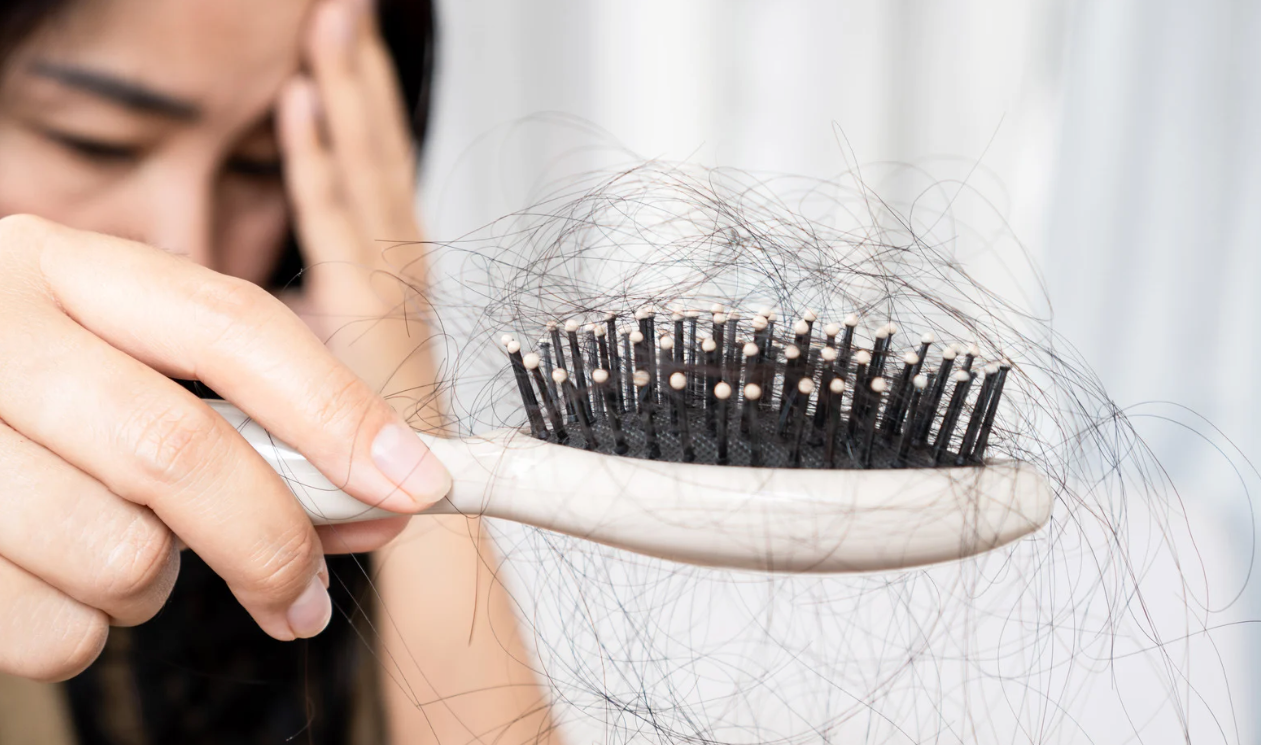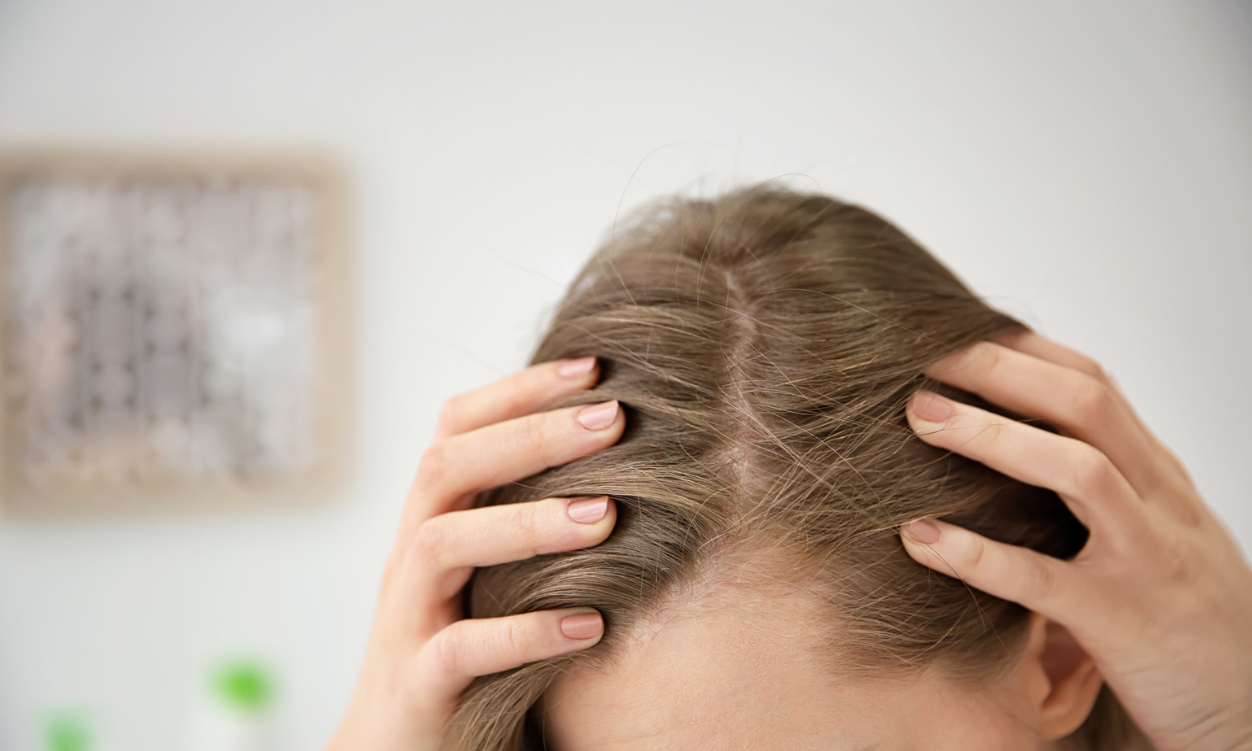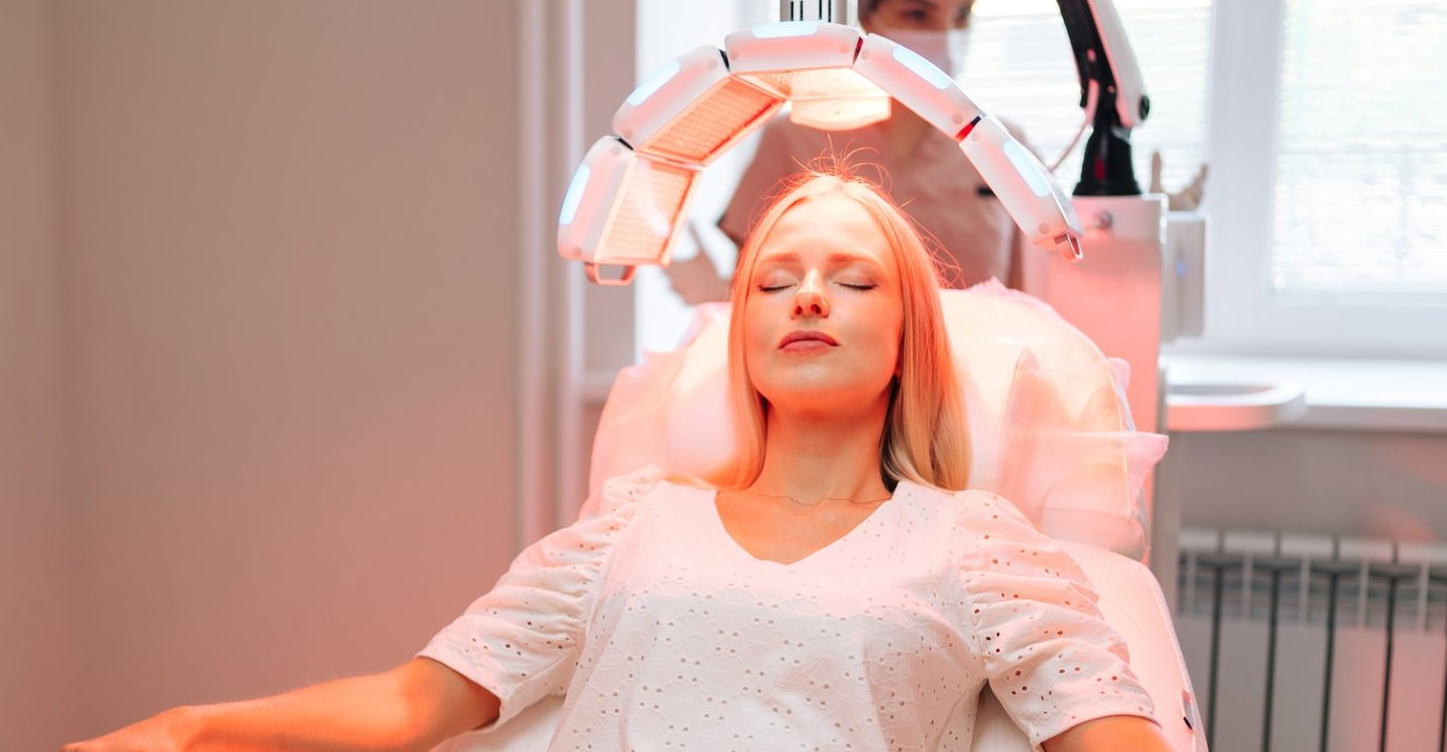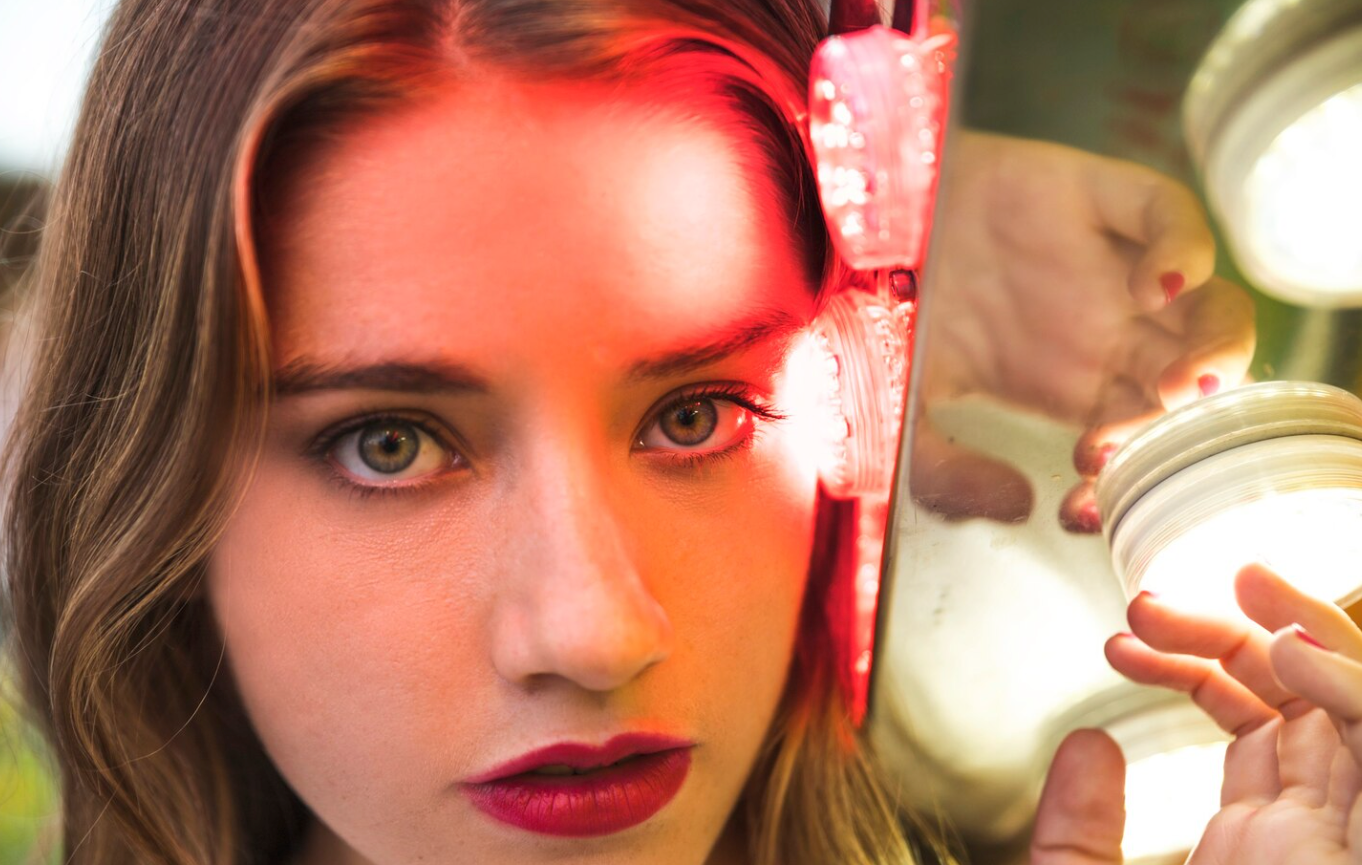
20 Years of Producing the Highest Quality, Most Reliable, and Effective LED mask.
Red light therapy uses specific light wavelengths to improve blood flow and stimulate hair follicles. Regular use of FDA-cleared devices can enhance hair regrowth over time.

Hair loss can be frustrating, especially when shampoos, oils, or supplements fail to deliver results. Red light therapy for hair loss can assist stimulate hair growth by boosting blood flow and energy in your scalp cells. It is safe, non-invasive, and backed by research for certain types of thinning. You will learn what red light therapy is, how it works on hair follicles, and what benefits you can expect. This guide also covers the optimal devices, how to utilize them at home, and who is most likely to see results. Where you're looking for a drug-free and straightforward option to support healthier hair, keep reading.
Quick Insights 💡:
Obtain in touch with Led Mask, a trusted name in LLLT and LED therapy products worldwide.
Red light therapy for hair loss, also known as low-level light therapy (LLLT), utilizes specific wavelengths of light to target the scalp. This light reaches your hair follicles and may assist improve their function. It is a safe and non-invasive option that does not involve surgery or needles.
The process is often linked to photobiomodulation. This means the light helps your cells produce more ATP (adenosine triphosphate), which is the main source of energy for your cells. More energy can support healthier hair follicles and encourage them to stay in the active hair growth phase longer.
You may see this therapy offered in clinics or through at-home devices like helmets or caps. These devices are designed to deliver consistent light to your scalp in short sessions a few times a week.
Red light therapy works differently than common hair loss medications:
Since it does not rely on chemicals or hormones, you may find it easier to utilize if you want a non-drug approach. While results vary, research suggests it can be most effective for early thinning or pattern hair loss.
Also Read: Faster Healing of Cold Sore utilizing Light Therapy. FDA-cleared

Red light therapy utilizes specific wavelengths of light, typically ranging from 630 to 680 nanometers, which can penetrate the scalp and reach the hair follicles. These wavelengths are safe and non-invasive, targeting the cells in your skin and follicles.
When the light reaches the cells, it helps your mitochondria create more ATP, which is the energy your cells need to function. With more energy, your follicles can become more active and support healthier hair growth.
The treatment also improves blood circulation in your scalp. Better blood flow means your follicles obtain more oxygen and nutrients, which are both critical for keeping hair strong and healthy.
Another benefit is that red light therapy can assist reduce inflammation in the scalp. Less inflammation creates a better environment for growth and may assist calm irritation that can slow down follicle activity.
Many people utilize it since it may assist reactivate dormant follicles. Where your follicles are still alive but not producing much hair, the light can sometimes encourage them to resume production.
Here is a quick breakdown of what happens:
Also Read: Red Light Therapy Benefits for Hair Regrowth & Thickness

You can utilize red light therapy as a non-drug option to support hair growth. The treatment uses low-level light that encourages your follicles to stay active and produce new strands.
It has been studied in both men and women with thinning hair. Many people notice less shedding over time, along with healthier-looking hair.
The therapy is painless and does not require a clinic visit. You can utilize devices like caps or helmets at home, which makes it simple to add into your routine.
Essential benefits include:
Some studies demonstrate that regular use can increase hair density within a few months. Results vary, but consistency is critical for the optimal outcome.
This approach avoids needles or surgery. Instead, you rely on light exposure that is safe and easy to repeat as part of your long-term care.
Also Read: Measuring Light Therapy Device's Power

You can select from several types of red light therapy devices that vary in coverage, convenience, and cost. Each option has its own strengths, and the right choice depends on your level of hair loss, lifestyle, and budget.
Many models are FDA-cleared, which means they meet safety standards for at-home use. Some popular helmets include CurrentBody and iRestore, which dermatologists often recommend. Where you want consistent results and do not mind wearing a bulkier device, helmets are one of the most effective choices.
Some caps are FDA-cleared, providing added reassurance about their safety. Popular brands include Capillus and Kiierr, which are designed for daily or every-other-day use. Where you want a device that blends into your routine without much hassle, caps are a practical option.
These tools are typically more affordable than helmets or caps, making them a strong entry point for those who want to try red light therapy without a significant investment. They work best if you only have small thinning spots rather than widespread hair loss. The main drawback is that you should spend more time adjusting the device to fit around your head. Combs and brushes are a strong choice if you want control over where the light goes and do not mind longer sessions.
They are flexible and easy to handle, but they typically cover a smaller area at a time. This means you should move them around your scalp to treat all sections. Some handhelds come with adjustable settings, allowing you to customize the intensity or wavelength. They are optimal if you want one device for multiple uses but do not require full scalp coverage in a single session.
Where you prefer flexibility and are willing to spend extra time, handheld devices can be a useful option.
Also Read: Light Therapy for ACL Surgery Recovery
You will achieve the optimal results from red light therapy when you follow a consistent schedule, prepare your scalp properly, and support the process with healthy habits. Combining these steps helps improve hair growth and maintain a healthier scalp.
Where your hair is thick, part it in the areas where thinning is most noticeable. This gives the light direct contact with the scalp. Check that your device is positioned correctly. Caps, helmets, or combs should sit snug and cover the intended areas. Following the instructions that come with your device helps you avoid wasted sessions.
You can also support your hair by focusing on nutrition. A diet rich in protein, iron, zinc, and biotin helps your body build stronger strands. Drinking enough water and managing stress also play a crucial role in maintaining scalp health. Simple habits such as gentle scalp massages or avoiding harsh chemical treatments can further protect your hair. These steps will not replace therapy, but they can enhance your results and create them stronger and more lasting.
Also Read: Red Light Therapy for Eczema: What to Know About Skin Health

Red light therapy does not work the same way for every type of hair loss. The results depend on whether your hair follicles are still active and capable of producing new growth. Optimal results are often seen when follicles are still alive. This includes:
These conditions usually leave some follicles intact, which allows light therapy to stimulate activity and support thicker growth.
Less effective situations include:
In these cases, red light therapy cannot restore hair since there are no healthy follicles to respond to the treatment. Where you are unsure of the type of hair loss you have, consulting a dermatologist can be helpful. Identifying the cause first will give you a clearer idea of whether red light therapy could be worth trying.
Consider red light therapy if you are experiencing early or mild hair loss. It works best when some active follicles are still present. People who may benefit include:
This therapy is not likely to assist if you have complete baldness or long-term scarring hair loss. The light needs active follicles to encourage growth. Where you want a simple way to support your current hair health, you can use red light therapy at home with devices made for the scalp. You should use it consistently over time to see results.
It may also be a strong option if you want a non-invasive choice before trying stronger treatments. Always check with a doctor if you are unsure about the cause of your hair loss.
Red light therapy can be a safe and useful option if you want to slow hair loss or improve thinning. It works best when you start early, before large bald spots form. You should expect gradual results, not quick changes.
Who should consider it?
For optimal results, select an FDA-cleared device. Use it about 3 to 5 times each week. Most people require at least 4 to 6 months before noticing thicker or denser hair.
Keep in mind that red light therapy is not a cure. It can support hair growth but may not fully restore lost hair. You can use it alone or combine it with other treatments like topical minoxidil if your doctor approves.
Where you're looking for a low-risk option that fits into your routine, this therapy provides a practical way to manage hair loss over time.
Discover our full catalog of certified light-therapy devices built to improve skin health, recovery, and everyday wellness.
